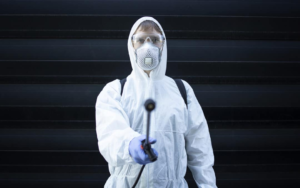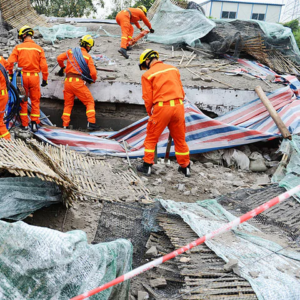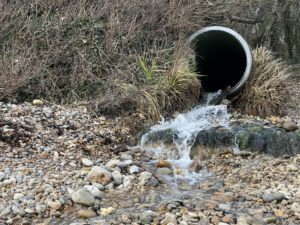Plumbers are responsible for constructing, installing, and maintaining pipes that deliver water to and remove waste from homes and businesses. Their work ensures that we have access to clean, fresh water and allows us to enjoy modern comforts like showering and bathing.
Plumbing is a hands-on profession that requires physical strength, stamina, and good health. It also demands knowledge of a variety of tools and equipment. Contact Gateway Plumbers of Aurora now!

Plumbers install and repair the pipes that deliver water and carry waste out of homes and businesses. Their duties include laying out pipe routes, cutting holes in floors and walls, and connecting fixtures such as bathtubs, sinks, toilets, and dishwashers to the pipes. They may also work on larger-scale plumbing systems in commercial or industrial settings. These projects require more advanced knowledge of engineering principles, and plumbers often collaborate with engineers on building design projects.
Because plumbers often work with hazardous materials, they must follow strict safety procedures to protect themselves and their customers. They are also required to keep up with industry standards and best practices, as well as continually upgrade their skills to stay competitive and relevant.
Customer service is another essential aspect of this profession, as plumbers must be able to communicate effectively with clients to understand their needs and provide recommendations and estimates. They may also be called on to troubleshoot problems and make repairs, so strong problem-solving skills are necessary. Plumbers also use their customer service skills when collaborating with construction teams, as they are responsible for ensuring that plumbing is integrated seamlessly into new building projects and that all requirements and regulations are met.
Plumbing technicians also have to be knowledgeable about a wide range of tools and equipment. For example, they may need to know how to operate power saws and drills, as well as more specialized machinery such as backflow preventers and water heaters. In addition, they must be able to read and interpret blueprints and technical specifications.
Because plumbing is a trade that requires attention to detail, plumbers must be accurate when measuring and cutting pipes and fittings. They must also be able to work with a variety of materials, from copper to plastic to steel. When joining pipes together, they must use the correct solvents and techniques to ensure a watertight seal. Before leaving a job site, plumbers must ensure all connections are tight and secure, and they may need to test their work by running water through fixtures and checking for leaks.
Maintenance
Plumbing systems take away waste water, supply hot and cold water, and regulate indoor climate through pipes, valves, fixtures, and appliances. They are complex networks that require regular maintenance to function properly. Plumbers regularly inspect, repair, and replace these elements to ensure safe and efficient operation. Their duties also include interpreting building codes and regulations, working with various tools and materials, and ensuring compliance with safety standards.
Plumbing professionals work with both residential and commercial clients, on a range of different systems. They are skilled in installing and repairing pipes, drains, and fixtures like toilets, sinks, and faucets. They can also handle larger scale drainage and water systems for office buildings, hospitals, retail stores, and industrial facilities.
A qualified plumber can install and repair gas lines, as well as a range of other systems. Some even offer emergency services for burst pipes, clogged drains, and other plumbing disasters that can occur in the home or workplace.
Depending on their specialization, plumbers can choose to focus on either installation or maintenance. Installation projects typically involve new construction or modifying existing systems for renovations and upgrades. In these situations, plumbers often work from blueprints or plans to lay out piping and connect appliances like water heaters. They may also have to adhere to strict deadlines and budget constraints.
When maintaining plumbing systems, plumbers frequently check for leaks, clogs, and other issues that could affect water flow. They use a variety of tools, including augers, snakes, and hydro jets, to unclog drains and repair pipes. They also troubleshoot issues like low water pressure and temperature fluctuations.
When completing maintenance tasks, it’s important for plumbers to keep accurate records and documentation. This helps them track the effectiveness of their work, identify problems, and make improvements in the future. CMMS software can help plumbing companies maintain detailed service logs that are easy to access and manage. These tools can also track technician feedback, helping managers identify trends and potential issues. This information can be used to create more effective maintenance schedules for plumbing assets. It can also be analyzed to optimize resource allocation and improve performance.
Repair
Over time, mineral deposits can build up on threaded plumbing fixtures and make them difficult to remove. In some cases, the problem can be solved by simply tightening the fixture. If this doesn’t work, the plumber may have to dismantle the fixture and clean out the threads. This can be a messy and expensive job, so the plumber should take precautions to protect the surrounding area and the homeowner’s possessions.
Plumbers are often called on to repair leaky pipes and fixtures, but they also fix a variety of other plumbing problems. These might include clogged drains, toilets that don’t flush, and water heater failures. They can also replace and install plumbing fixtures like sinks, tubs, showers, and faucets. In some cases, a plumber may have to cut holes in walls and floors to install pipes or fixtures. They can use a variety of tools and equipment to do their work, including pipe cutters, wrenches, saws, and soldering torches.
Another important function that plumbers perform is backflow prevention. This involves installing and repairing devices that prevent contaminated water from entering the house’s freshwater supply. Plumbers who specialize in this service typically have additional training and certification.
If a toilet or drain is making a clattering noise, it could be caused by a missing vent or a broken vent pipe. A plumber should always check the venting system when a customer complains about a noisy toilet or drain.
If a pipe is leaking, the plumber should shut off the water to that area of the home. If the pipe is located outside the house, the plumber should turn off the main water valve. Next, the plumber should clear any blockages in the venting system and make sure that the shutoff valve at the water meter is working. Finally, the plumber should replace any damaged or worn parts. The plumber should also inspect the exposed pipe sections and joints to ensure that they are safe and secure. If a plumber finds a dangerous situation, they should notify the customer and explain their options for safety and repair.
Replacement
Plumbing fixtures and fittings, like faucets, showerheads, toilets, and other equipment, wear out over time. Plumbers replace these parts with newer, more efficient models to reduce water and energy consumption. They also recommend and install environmentally friendly plumbing fixtures, such as low-flow toilets and rainwater harvesting systems.
Plumbing is a skill that can be used in many different industries and jobs. It is a stable career choice that offers good pay and job security, as well as opportunities for advancement. It is also considered recession-proof, as the need for plumbing services remains steady regardless of economic conditions. In addition to stable employment, skilled plumbers can also establish their own businesses, increasing their earning potential. However, the work can be dangerous and physically demanding, and it is important to follow proper safety procedures.








